Here’s another daily double from Jim Gain’s series, “Learn 100 Common Valley Birds.” We’re proud to publish Jim’s superb photos and illuminating commentary. Follow the links below for more of Jim’s enlightening excursions into the wonders of nature. ed
Learn 100 Common Valley Birds Hermit Thrush: Post #37 (Species 58/100)
Few things on earth fill us with as much delight as birds and knowing them by name only adds to our pleasure. In California’s San Joaquin Valley, with only a little bit of effort, anyone can learn 100 local bird species. Most Valley residents come in contact with at least a dozen species that most recognize but may not know the name of. The intent of this blog is for followers to learn about and be able to identify 100 common valley birds. A Reflections of the Natural World Blog Post Series by Jim Gain
WHAT’S IN A NAME?
Hermit Thrush – Catharus guttatus
Name Roots: (Gr. catharos, “pure” – L. gutta, “a drop”)
PHYSICAL CHARACTERISTICS
The Hermit Thrush is a small bird with a rich brown upper body and smudged spots on the breast. It has a reddish tail that sets it apart from similar species in its genus. The underparts are white with dark spots on the breast and grey or brownish flanks. They have pink legs and a white eye ring.
One interesting fact about the Hermit Thrush is that it is more cold-tolerant than other Catharus thrushes, and it is the only species to regularly winter in large parts of the U.S. Hermit Thrushes can be very inconspicuous in winter, but a patient birder might locate one by finding berry trees in the woods or maybe even in your own backyard.
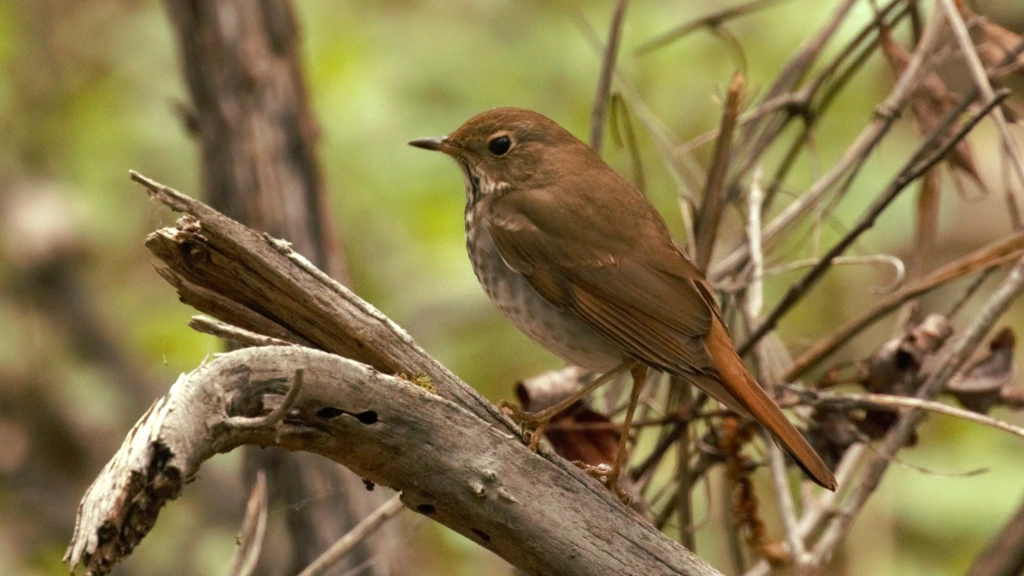
DISTRIBUTION STATUS IN THE CENTRAL VALLEY
The Hermit Thrush is a Fairly Common Winter Visitor in the Central Valley and can be found in almost any area with dense shrubs.
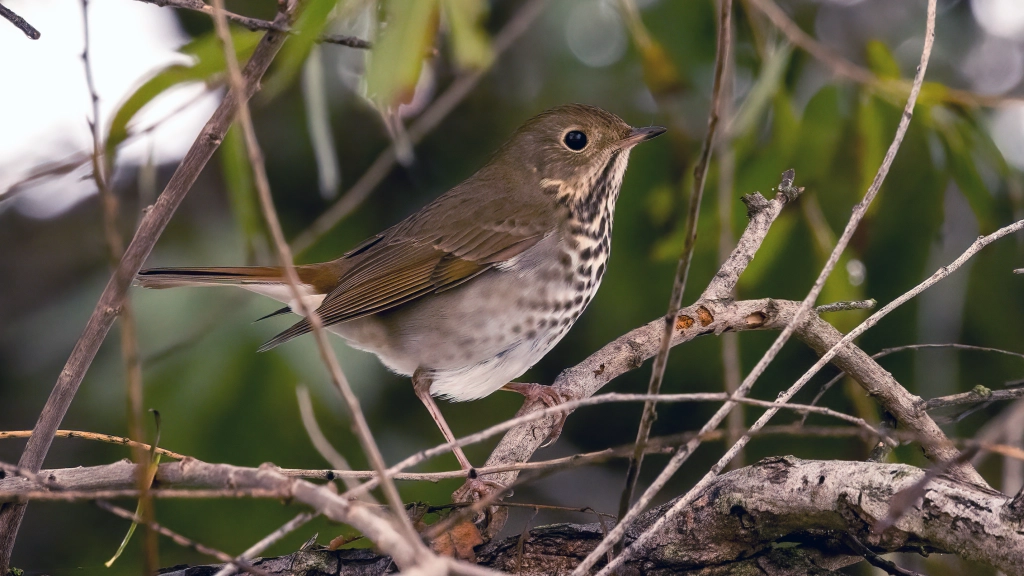
Almost everyone can identify the American Robin. Below, Jim Gain adds to our knowledge with some spectacular photos and illuminating text. ed
Learn 100 Common Valley Birds Blog Post #38 American Robin (Species 59/100)
WHAT’S IN A NAME?
American Robin – Turdus migratorius
Name roots: (L. turdus, “a thrush”; LL. magirator, “wanderer”)
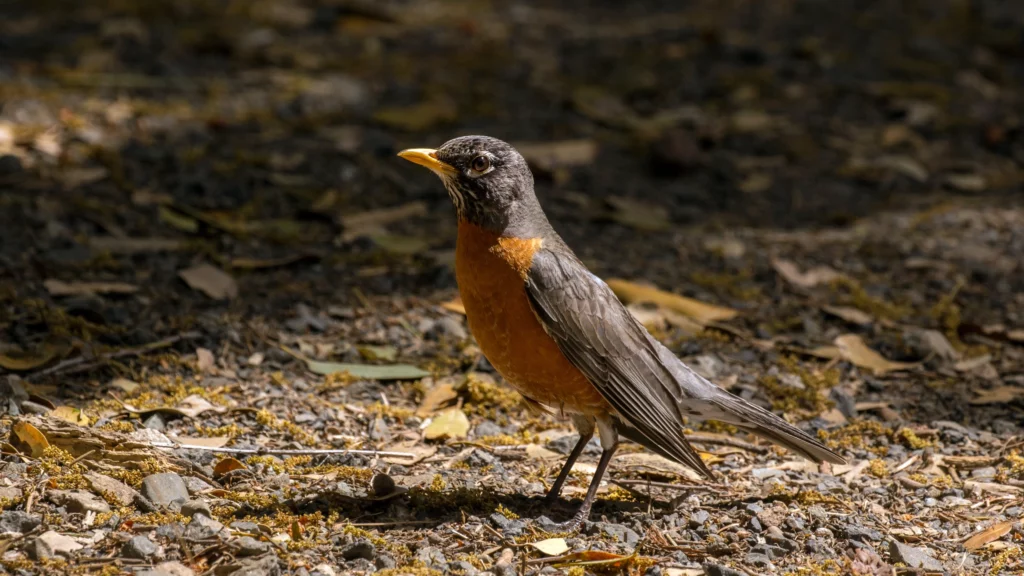
PHYSICAL CHARACTERISTICS
The American Robin is a medium-sized songbird with a length of around nine to 11 inches and a wingspan of 12 to 16 inches. It has a robust build, with a rounded body and a medium-length tail and dark gray legs. The most distinctive physical characteristic of the American Robin is its orange-red breast, belly, and sides, which contrast with its darker gray head and back. It has a white eye ring and a yellow beak.
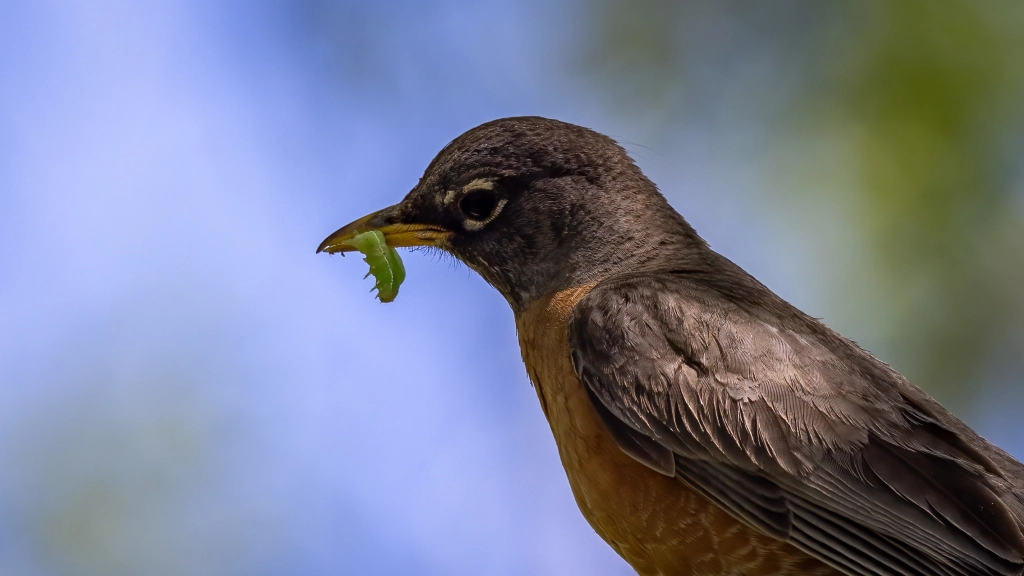
One interesting fact about the American Robin is that it has the ability to detect soil vibrations using its ears. This unique feature allows it to hunt by hearing and finding earthworms underground by simply using its listening skills. The bird typically takes several short hops and then cocks its head left, right, or forward to detect the movement of its prey.
DISTRIBUTION STATUS IN THE CENTRAL VALLEY
The American Robin is a Common year-round Resident in the Central Valley and can be found in almost any area with shrubs or trees nearby.
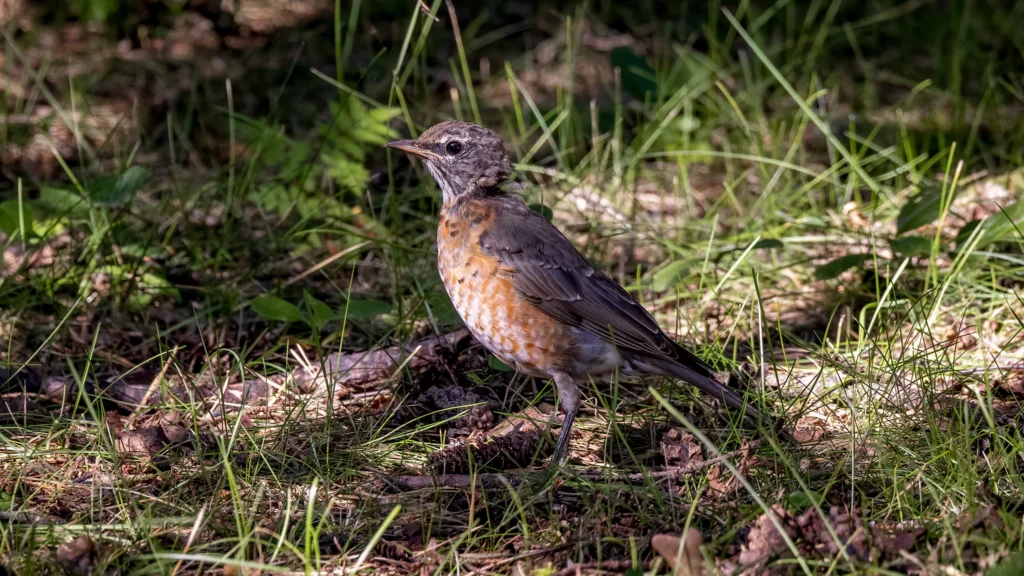


Red Robbins were commonly seen on a daily basis, hopping in my yard, back on the East Coast. How I miss them. I have yet to see one here in the Central Valley. I will be on the look out, now that I know they are here.
Thank you, Jim